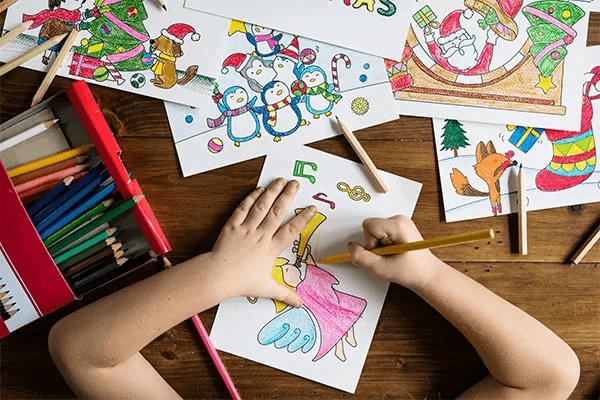Why Creative Learning is the Future of Education in CBSE Schools in India
The education landscape is undergoing a revolutionary shift, and creative learning stands at the heart of this transformation. CBSE-affiliated schools in India are increasingly moving away from traditional teaching methods and embracing creative learning approaches that encourage innovation, critical thinking, and problem-solving. With the world evolving at an unprecedented pace, students need more than just academic knowledge—they need creativity and adaptability to succeed.
In this article, we’ll explore why creative learning is shaping the future of education in CBSE schools and why it is a crucial component for preparing students for tomorrow’s challenges.
The Shift Towards Creative Learning in CBSE Schools
Education in the 21st century demands a fresh approach. Creative learning is an educational strategy that promotes curiosity, innovation, and real-world problem-solving, departing from traditional rote learning methods. CBSE (Central Board of Secondary Education) schools are at the forefront of this shift, integrating creative methodologies into their curriculum to better prepare students for the challenges of the future.
Key Benefits of Creative Learning:
Encourages Critical Thinking: Students are encouraged to question assumptions and think outside the box.
Fosters Innovation: Promotes out-of-the-box solutions and innovative ideas.
Engages Students: Makes learning more interactive and enjoyable.
Why Creative Learning is the Future of Education
As technology and industries evolve, the ability to think creatively is becoming a key driver of success. Creative learning prepares students not just for exams but for life. By fostering adaptability and innovation, CBSE schools are setting the stage for students to thrive in a fast-paced world where the ability to solve complex problems is invaluable.
Why Creative Learning is Pivotal:
Prepares for Future Careers: Jobs in the future will require creativity and adaptability more than just technical knowledge.
Develops Emotional Intelligence: Through art, collaboration, and experiential learning, students develop empathy and interpersonal skills.
Encourages Lifelong Learning: Fosters a mindset of curiosity and continual learning.
Art-Integrated Learning: The Intersection of Art and Academics
A leading example of creative learning in CBSE schools is Art-Integrated Learning (AIL). This initiative seamlessly blends art forms like music, dance, and painting with academic subjects such as mathematics, science, and languages.
Why AIL is Effective:
Engagement: By using creative expressions, students find learning more relatable and engaging.
Improved Comprehension: Complex subjects become easier to understand when students visualise or perform them creatively.
Balanced Development: Encourages the development of both analytical and creative skills.
Example: A math lesson might incorporate drawing geometrical shapes or using music to explain fractions, making abstract concepts tangible.
Experiential Learning: Hands-On, Real-World Experience
Experiential learning is rapidly gaining popularity as one of the cornerstones of creative education. It allows students to learn by doing, applying theoretical knowledge to practical scenarios.
How Experiential Learning Benefits Students:
Practical Application: Reinforces academic concepts by linking them to real-world experiences.
Active Learning: Encourages students to take initiative and responsibility for their learning.
Deeper Understanding: Increases retention by making learning meaningful and relevant.
Example: Science students conducting environmental studies in their local area gain firsthand experience of ecosystem dynamics rather than just reading about them in textbooks.
Technology and Creativity: A Winning Combination
Incorporating digital tools into education is transforming CBSE schools. Technology not only enhances creativity but also provides students with access to endless learning resources. Virtual labs, gamified learning platforms, and AI-powered educational apps are redefining classroom experiences.
The Role of Technology in Creative Learning:
Personalised Learning: Technology adapts to each student’s learning pace, providing tailored educational experiences.
Interactive Engagement: Gamified platforms and virtual tools keep students engaged and motivated.
Skill Development: Enhances digital literacy and prepares students for future technology-driven careers.
Project-Based Learning: Collaborative and Creative Problem-Solving
Another key element of creative learning is Project-Based Learning (PBL). This method involves students working on hands-on projects that address real-world problems, requiring them to use critical thinking and creativity.
Why Project-Based Learning is the Future:
Collaboration: Students work in teams, building essential communication and teamwork skills.
Real-World Application: Encourages students to tackle practical problems, preparing them for the workplace.
Innovation: Pushes students to think critically and creatively to solve complex challenges.
Example: A project on sustainable urban development may require students to create models, research environmental impacts, and propose creative solutions for greener cities.
Skill-Based Learning: Preparing for Tomorrow’s World
Creative learning initiatives in CBSE schools go beyond traditional academics. They include skill-based learning courses that teach practical, real-world skills like coding, robotics, and entrepreneurship.
Why Skill-Based Learning is Crucial:
Career Readiness: Equips students with the skills needed for future careers in rapidly changing industries.
Creativity and Innovation: Encourages creative thinking in fields such as design, technology, and business.
Problem-Solving: Teaches students how to approach challenges creatively and strategically.
Collaborative Learning: Encouraging Team-Based Innovation
Collaborative learning is a key component of creative education. Working together on projects helps students develop important skills such as leadership, communication, and collaboration.
Benefits of Collaborative Learning:
Shared Knowledge: Students exchange ideas and perspectives, leading to deeper understanding.
Creativity: Group work fosters innovation as students brainstorm and solve problems together.
Social Skills: Builds empathy, cooperation, and respect for others’ viewpoints.
Teacher Training and Creative Learning
Creative learning requires teachers to rethink traditional educational approaches. CBSE provides extensive teacher training to equip educators with the skills and tools needed to foster creativity in their classrooms.
How Teacher Training Supports Creative Learning:
Professional Development: Teachers receive training on how to integrate technology and creativity into the curriculum.
Creative Methodologies: Teachers learn how to use project-based and experiential learning techniques effectively.
Supportive Environment: Educators are given the resources to create an open and innovative learning environment for students.
Assessment in Creative Learning
CBSE schools are moving away from traditional exams towards more dynamic assessment methods. Instead of focusing solely on memorisation, students are evaluated on creativity, collaboration, and problem-solving abilities.
Creative Assessment Methods:
Portfolios: Students compile a portfolio of their work throughout the year, showing growth and creativity.
Presentations and Projects: Students are assessed based on their ability to present ideas and complete real-world projects.
Peer Review: In some cases, students assess each other’s work, promoting collaboration and reflective thinking.
Challenges and Future Prospects
While creative learning offers many benefits, it also comes with challenges. Limited resources, teacher resistance to new methods, and a lack of infrastructure can hinder the full implementation of these initiatives. However, with continuous support from CBSE and ongoing investments in educational infrastructure, creative learning is set to shape the future of education.
Conclusion: Creative Learning as the Future of Education
Creative learning is not just a trend—it’s the future of education, especially in CBSE-affiliated schools in India. By fostering innovation, critical thinking, and adaptability, creative learning equips students with the skills they need to succeed in an ever-evolving world.
As schools continue to adopt these strategies, we can expect an education system that not only values academic knowledge but also nurtures creativity and real-world problem-solving abilities.
FAQs
Why is creative learning important in CBSE schools?
Creative learning promotes critical thinking, problem-solving, and innovation, helping students prepare for future challenges beyond academics.
How does Art-Integrated Learning benefit students?
Art-Integrated Learning makes academic concepts more relatable and engaging, fostering both creativity and analytical thinking.
What role does technology play in creative learning?
Technology facilitates personalised learning, enhances engagement, and prepares students for technology-driven futures through interactive tools like virtual labs and AI-powered apps.
Why is Project-Based Learning significant?
Project-Based Learning encourages real-world problem-solving, teamwork, and creativity, helping students apply theoretical knowledge in practical settings.
How are teachers trained for creative learning in CBSE schools?
CBSE provides professional development programs that equip teachers with innovative teaching methods, including experiential learning and the integration of technology in the classroom.
What challenges exist in implementing creative learning in CBSE schools?
Challenges include limited resources, teacher resistance to new teaching methods, and the need for better infrastructure, though CBSE continues to work on overcoming these barriers.

